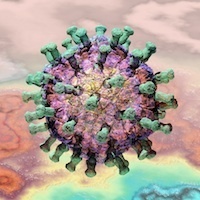Plant expression systems based on nonreplicating virus-based vectors can be used for the simultaneous expression of multiple genes within the same cell. They therefore have great potential for the production of heteromultimeric protein complexes. This work describes the efficient plant-based production and assembly of Bluetongue virus-like particles (VLPs), requiring the simultaneous expression of four distinct proteins in varying amounts. Such particles have the potential to serve as a safe and effective vaccine against Bluetongue virus (BTV), which causes high mortality rates in ruminants and thus has a severe effect on the livestock trade. Here, VLPs produced and assembled in Nicotiana benthamiana using the cowpea mosaic virus-based HyperTrans (CPMV-HT) and associated pEAQ plant transient expression vector system were shown to elicit a strong antibody response in sheep. Furthermore, they provided protective immunity against a challenge with a South African BTV-8 field isolate.
The results show that transient expression can be used to produce immunologically relevant complex heteromultimeric structures in plants in a matter of days. The results have implications beyond the realm of veterinary vaccines and could be applied to the production of VLPs for human use or the coexpression of multiple enzymes for the manipulation of metabolic pathways.
Generic reovirus-like particle by Russell Kightley Media


 Your new post is loading...
Your new post is loading...











While this has not been subject to the same hype as the FMDV VLPs featured here and all over the media recently, it is at least as big a deal - and yes, we are involved, and yes, we are highly stoked with what we did.
Because this is a four-protein virus-like particle, expressed via transient expression in N benthamiana, and assembled in yields high enough to allow purification of particles that were protective in a live virus challenge experiment in sheep.
Yes, protective in actual sheep, and competitive with the standard attentuated live virus vaccine - which is a seriously big deal!
Plus the electron micrographs of the particles are SO cool. Congratulations, Eva and team, you have done really, really well.